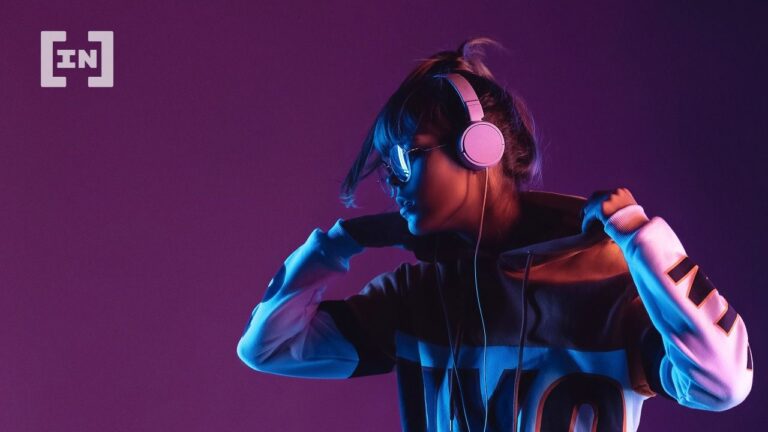
Source: news.google.com
Hip-hop is fast becoming a driving force for Web3 music. While EDM and pop music have been dominating the space, hip-hop has been making inroads. This is due to the fact that hip-hop is arguably the most genuine reflection of the NFT space. And it’s underground artists, not mainstream rappers, who use their talents to create innovative projects on Web3.
Musicians are now taking advantage of available technology, creating soundscapes that are both mind-blowing and profitable. They are also leveraging platforms like Ethereum and Flow to create digital assets that can be bought, sold, and traded on a global scale.
This means reaching a much larger audience while maintaining artistic control. As more hip-hop artists continue to explore their options, we’re likely to see even more success stories emerge from their involvement with Web3 in the coming year and beyond.
Hip Hop on Web3 in 2023
Hip-hop has greatly benefited from the development of Web3. The decentralized nature of blockchain technology has put the power back in the hands of independent musicians. As a result, a new generation of NFT creators who grew up with digital tools and platforms are now taking the lead creatively.
the likes of dave black, MoRuf and more are pushing the boundaries of what’s possible. That is, when it comes to independent music on NFT platforms. Together they are helping to shape the future of hip-hop on Web3. They are creating a vibrant and exciting space for artists to thrive.
However, with all the hoopla, the nature of the competing blockchain can result in a somewhat isolated system.
Current Web3 music markets are fragmented
Markets are playing a vital role in the Web3 music industry. The fragmentation of blockchains, communities, and user experiences pose challenges for musicians. They must navigate changes in onboarding methods and priorities to the platform.
Despite the openness of NFTs as transferable assets, they are functionally isolated in the current ecosystem of NFT platforms. This is because they can only be seen on the blockchain on multiple platforms in an ostensible way. This presents artists with a unique challenge in deciding where and how they want to woo fans. Some are looking for exclusive partnerships, others are casting a wider net.
There are three different avenues that Web3 musicians are using to release music:
- General NFT marketplaces provide a wide range of services for users looking to buy or sell digital collectibles, such as artwork or music.
These platforms offer a variety of features that make them attractive to both buyers and sellers. These features include easy onboarding processes, low fees, secure transactions, and access to a large pool of potential buyers.
- Music-focused niche marketplaces focus solely on providing services related to buying and selling digital music assets, such as albums or singles. These platforms often have more advanced features than mainstream platforms.
- Artist-oriented marketplaces, as the name suggests, are geared toward creatives in music, art, film, and photography.
Benefits of Platform-Independent Collaboration
Despite the siled system, most musicians have not restricted their music releases to a single market. Instead, they have tried to reach as many people as possible by distributing their music through multiple channels. This includes curated and non-curated markets, as well as general and specific music platforms.
Many artists found favor in one medium but received little attention in another. This “spaghetti on the wall” strategy is common when it comes to NFT music marketplaces. It is essentially a learning process through iteration. The idea is that the greater the mix, the greater the possibility of collaboration and visibility. In short, you win some, you lose some.
NFT Music Markets
The rise of music-specific NFT marketplaces has been a game changer for Web3 music artists. These platforms provide an opportunity to reach a larger audience and increase the chances of your releases selling out.
For example, Sound.xyz provides a promotional engine around each installment, including dedicated Twitter spaces premiering the music, which can help increase visibility and sales.
However, not all artists are satisfied with the options currently available in terms of selected markets. The barrier to entry is simply too high on many platforms, making it difficult for smaller artists to catch on.
This highlights the need for more accessible and affordable options that meet the needs of independent musicians. With more custom solutions available, Web3 artists will be able to better capitalize on the potential of NFTs for their careers.
What does the future of Web3 hip-hop hold?
The future of Web3 hip-hop is an exciting prospect, as the industry has already seen some major players enter the space. Industry heavyweights like Soulection and Death Row Records have made moves to explore the crossroads between mainstream hip-hop and Web3 music, with varying degrees of success.
There’s still no telling what it will take for mainstream hip-hop to fully embrace Web3. However, with these companies leading the way, this is expected to happen sooner rather than later. The potential for mass adoption of Web3 music is undeniable, and with more companies investing in this space, the impact could be significant. Web3 hip-hop is paving the way for other creatives to follow suit.
Related
Warner Music Group joins forces with Polygon to create the Web3 music platform
Music Revolution: How Web3 Is Completely Changing The Power Of The Fans
Sensorium partners with Polygon Studios to accelerate Web3 development
Disclaimer
All information contained on our website is published in good faith and for general information purposes only. Any action the reader takes on the information found on our website is strictly at their own risk.
Read More at news.google.com